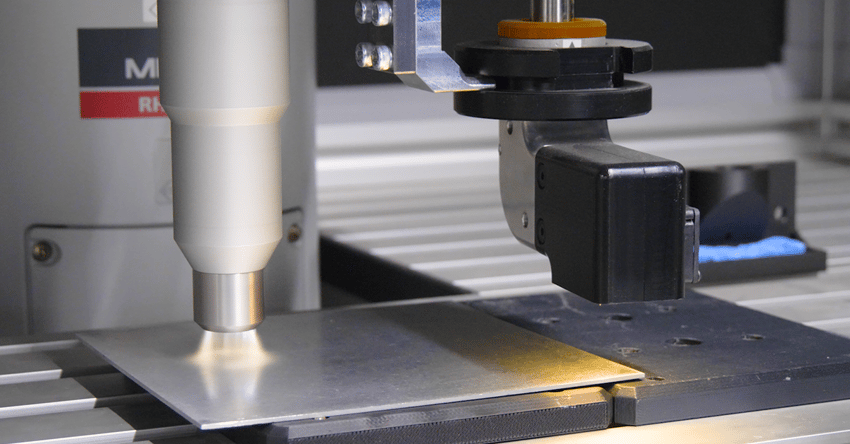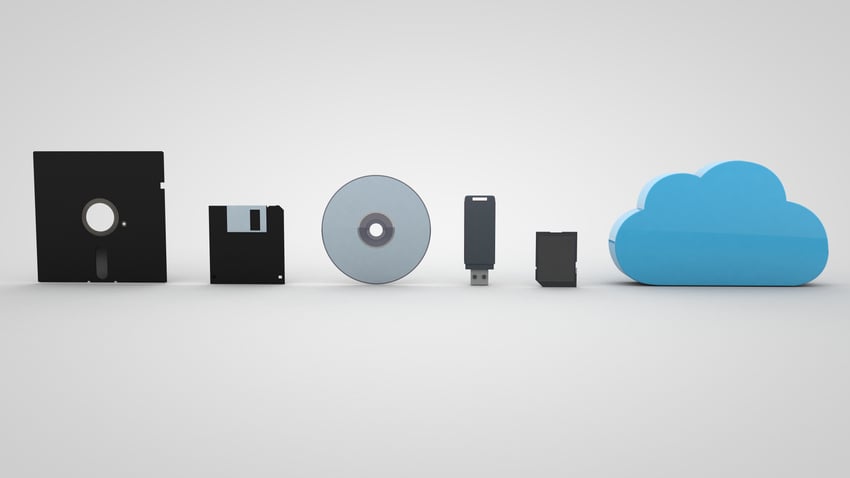Are inconsistencies in bonding between your multi-site manufacturing lines creating poor-quality parts, like a band singing out of tune? This article will help you to identify and resolve those issues for good. Discover what causes inconsistent bonding, learn how to manage it, and get your multi-site production lines singing harmoniously.
How Surface Quality Can Boost (or Sink) Your Product
Strong bonds rely on a clean surface. A surface's top few molecular layers are crucial for forming a strong bond with adhesives, paint, coatings, and inks. Invisible contaminants, like a fingerprint or residue from environmental contamination, can hinder the surface's ability to accept these materials, ultimately weakening the resulting bond.
To avoid this, manufacturers go to great lengths to clean thoroughly. They may even do more cleaning than is necessary just to reduce the risk of bond failure. This may be acceptable in a single-site process, but more complex problems tend to appear in multi-site manufacturing.
These problems result from differences between locations performing what should be the same operation. Three drivers of this surface variability are:
- Inconsistent supplies and materials due to working with different vendors
- Differences in the equipment and processes used
- Insufficient visibility into environmental conditions
For example, in a recent project, Brighton Science collaborated with a manufacturer who obtained batteries from various suppliers. The goal was to compare two batteries from different suppliers and identify any discrepancies in the quality of surfaces that would later be bonded. Our analysis revealed contamination in both batteries but with varying degrees and types of chemical compounds. Interestingly, we discovered that while alcohol effectively cleaned contaminants from one battery, it was ineffective on the other. This finding explains the observed issues with wire bonding reliability.
The Multi-Site Challenge: Why Surface Quality Can Vary Across Locations
Not every manufacturing site is the same. Because of this, there is built-in variability of surface quality. This variability can be attributed to four key factors:
1. Differences in Cleaning Equipment
Equipment can vary, depending on when and by whom it was purchased. For example, changing environmental regulations have meant plants now tend to install aqueous systems, but legacy equipment is often "grandfathered in."
A related issue is the maintenance, cleaning, and operating procedures used. These may vary between facilities. Some cleaning materials might not be available in some locations.
A common result of differences like these is that surface quality specifications may not exist, or they are different for each location, depending on the equipment that’s available. This means surface quality system performance varies significantly.
Maintenance cycles of the equipment may vary between teams and locations. Without objective metrics telling a team when to perform a maintenance operation or catch an issue – efficiency suffers, and risk increases.
2. Differences in Manufacturing Environments
Environmental conditions can vary widely between plants. Humidity is a particular problem as this affects cure rates, but temperature, airflow, and differences in equipment layout can all result in surface variability.
3. Cultural Differences
Cultural differences between facilities can greatly affect how surface cleaning is carried out. Culture can refer to differences between countries and spoken languages, but the more significant factor is determining what incentives each plant is working toward. Some plants fixate on quality, while others are cost or output-focused. These incentives drive the behaviors (culture) that dominate in that specific manufacturing facility and, hence, the final results that are achieved.
4. Different Levels of Access to Specialized Expertise
Many manufacturers with multi-site operations employ their material specialists at a technical center. If this is co-located with a manufacturing plant, that site will likely have better access to technical expertise than one hundred or thousands of miles away.
Additional challenges for sites far from the center of expertise are time differences, which can delay communication, and language barriers.
From Subjective to Scientific: Elevate Your Surface Quality Measurement with Water Contact Angle
Historically, manufacturing plans needing to test surfaces to validate cleaning procedures and accurately assess surface readiness for bonding, coating, printing, or painting have used dyne solutions. There are several problems with these:
- Provides misleading go/no-go results
- Testing is for sampling and doesn't indicate the condition of the entire surface
- Destructive to the substrate being tested and can potentially harm the operator
- Subjective test that relies on visual inspection of the surface by an operator
- Poor repeatability
Water contact angle provides a far superior method of measuring surface quality and readiness. It's repeatable, has a high resolution, and can be used in both sampling and real-time, continuous measurement modes. Surface roughness and surface texture do not impact the measurement, and water contact angle measurements can be used to define a quantitative set of standards across the enterprise.
Combine Real-Time Surface Quality Measurement With Connectivity
Water contact angle measurements taken using BConnect provide manufacturers with high-resolution data about their surface quality. They can confidently know whether surfaces are clean enough for high-performance bonding or accurately verify a cleaning procedure. Real-time measurement enables continuous surface quality monitoring so processes can be better controlled and variability reduced.
A further step of particular relevance for multi-site manufacturers is the use of network surface measurement metrology. Using a measurement network, organizations can support collaborative experimentation to understand surface quality issues, enable sites to respond quickly in case of changes and remove human variability from the product quality equation. Benefits include:
- Faster response to quality issues
- Increased ownership of cleaning processes and quality measurement
- Clear communication among sites to prove quality is consistent
- Consistent local execution, regardless of culture and other local differences
Collaborative Problem-Solving
Once surface readiness measurement systems are networked, manufacturers can share sampling and notification procedures and work together to document, understand, and resolve quality problems. These capabilities have not been available before but are now available with BConnect, the networked surface intelligence platform from Brighton Science.
For an example of how this helps multi-site manufacturers achieve operational success, consider the following case history from Brighton Science:
Problem: During a routine quality inspection at a manufacturing plant in Ohio, an operator observed inconsistencies in bonding results.
Escalation and Assessment: These observations were promptly reported to Production Operations, who confirmed the inconsistencies through further evaluation. With the help of a site Manufacturing Engineer, the team delved into the manufacturing processes and the equipment involved.
Seeking Expert Insight: Recognizing the issue's complexity, the Ohio team sought expertise from the company's research center in Texas. Consulting with the Process Engineer there, they outlined the challenge and requested assistance.
Collaborative Experimentation: Leveraging BConnect, the Process Engineer in Texas devised an experiment to pinpoint the root cause. This experiment was implemented at the Ohio manufacturing plant with the help of the local Ohio engineer.
Expanding Expertise: Recognizing the potential impact on quality, the Supplier Quality contact in Texas began collaborating with the Manufacturing Engineer. Their combined expertise offered valuable insights into the supplier-sourced equipment.
Analysis and Knowledge Sharing: Following the BConnect experiment, the Ohio team analyzed the data. Their findings were documented and shared with the Knowledge Base Editor in Ohio to enrich the company's central information resource.
Outcome: This systematic approach, characterized by timely escalation, collaborative experimentation, and cross-functional expertise, ensured efficient resolution. By easily involving the right people at each stage, the team identified and addressed the root cause of the inconsistency. This successful collaboration serves as a model for future problem-solving, leveraging the diverse strengths within the organization.
Lessons from this case are:
- Cross-functional collaboration across locations and disciplines is crucial for problem-solving in manufacturing.
- Utilizing digital platforms like BConnect facilitates knowledge sharing and streamlines processes.
- Data-driven analysis is essential for identifying and resolving quality issues.
- The experiment, data, and findings can then be documented and added to the company's knowledge base to capture and enrich its central information resource. This prevents the costly knowing-doing gap commonly found in manufacturing.
Achieve Operational Success by Standardizing Surface Quality
Surface quality variation across different manufacturing sites leads to inconsistent product performance and quality issues. Traditional, subjective surface measurements often fail to capture crucial details, hindering effective team communication and collaboration.
This article has introduced a revolutionary solution: real-time, connected surface quality measurement data. This provides the ability to connect measurement systems across multiple sites. The result is a unified, objective view of surface performance, which allows for:
- Faster response: Identify and address quality deviations instantly, minimizing their impact.
- Enhanced communication: Clear, data-driven insights facilitate collaboration and ensure consistent product quality across locations.
- Reduced subjectivity: Eliminate human error inherent in traditional methods, ensuring accuracy and reliability.
This connected approach empowers manufacturers to:
- Define surface quality standards for consistent data collection
- Establish automated notification alerts for deviations, enabling swift intervention
- Document and resolve surface quality issues collaboratively through a centralized platform
This innovative technology represents a significant leap forward in multi-site manufacturing. By overcoming variability in surface quality, manufacturers can achieve unprecedented levels of consistency, efficiency, and product quality.
Learn how your organization can leverage digital transformation to boost multi-site manufacturing performance. Download the eBook "Digital Transformation: Why it's real, why it matters, and why you need it now."








